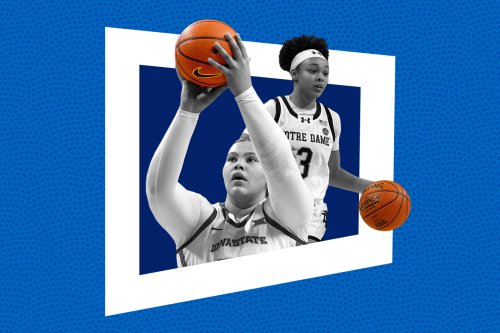Prehistoric women might’ve been stronger than today’s top female athletes
Cambridge University researchers found that prehistoric females may have been a whole lot tougher than today's strongest athletes.

When you picture women of the prehistoric era, you probably envision some hybrid of a dainty-but-curvy, ultra-feminine mother of many and a cave-dwelling, loincloth-wearing goddess. Well, forget what you think you know, and instead just go ahead with a mental vignette of Serena Williams.
According to bio-archaeologists at Cambridge University, it’s likely that some of the earliest living females were even tougher than the meat-and-veggie-loving CrossFitters of the 21st century, Quartz reports. In a new study, published in the journal Science Advances, archaeologists compared the strength of prehistoric female bones to those of today’s top woman athletes and found that the OG boss babes were probably even stronger than some of today’s most hard-core athletes. (Think collegiate rowers, for example.)
“A major activity in early agriculture was converting grain into flour, and this was likely performed by women.” —Alison Macintosh, bio-archaeologist who contends farm work made ancient women strong.
Because bone—which is a living tissue—changes based on activity, the researchers decided to test 300 living women of varying athletic levels and compare them to their prehistoric counterparts. The findings revealed that the ancient bones were nearly 30 percent stronger than those of non-athletic present-day ladies. Women who lived during the Neolithic era (so, roughly 7,000 years ago) were found to have similar leg-bone strength to today’s rowers, but their arm bones were up to 16 percent stronger for their size. Meanwhile, women who lived during the Bronze Age (around 4,000 years ago) had weaker leg bones than today’s athletes, but their arms were up to 13 percent stronger than the rowers in the study.
Gold Medal Couple Tara Davis-Woodhall and Hunter Woodhall Talk Marriage, Motivation, and Their Next Chapter With Nike

Coach Kara Lawson Wants You to ‘Handle Hard Better’—and Here Are 3 Ways to Do Just That

JuJu Watkins Leaves March Madness With ACL Tear—and This Knee Injury Is More Common Than You Think

Since prehistoric women didn’t have access to SoulCycle or turmeric smoothies, how did they get so darn strong (and how can we copy them)? “A major activity in early agriculture was converting grain into flour, and this was likely performed by women,” co-author of the study Alison Macintosh, a bio-archaeologist, explained to Quartz. It’s also likely that women during this time were responsible for gathering food and water for livestock, she says, as well as planting and harvesting crops.
So maybe forget Flywheel, and consider farming and a life working the land instead?
Speaking of Serena, here’s what she has to say about her own “badass body.” And here’s how to rock a mesh top, according to her stylist.
Sign Up for Our Daily Newsletter
Get all the latest in wellness, trends, food, fitness, beauty, and more delivered right to your inbox.
Got it, you've been added to our email list.







